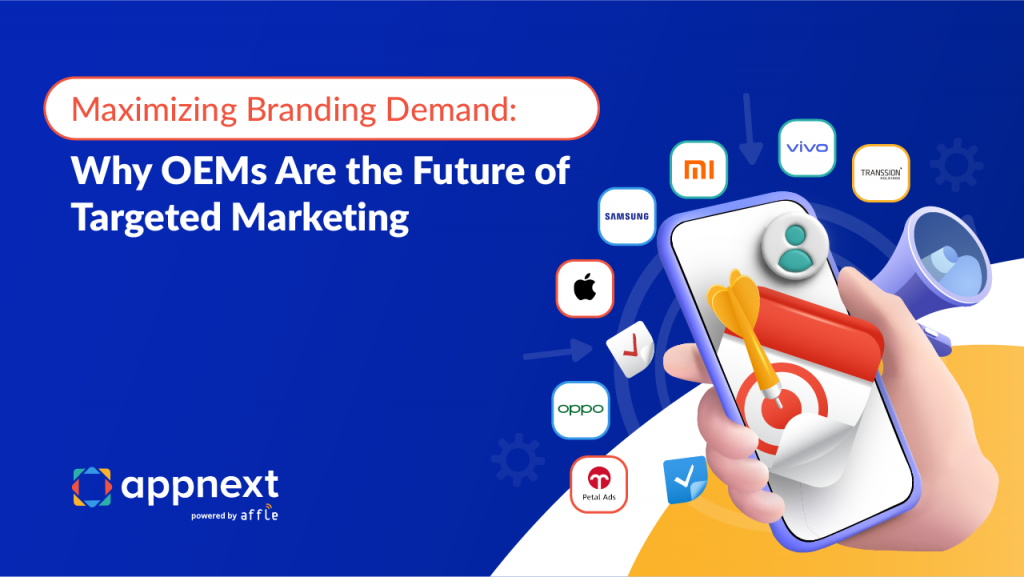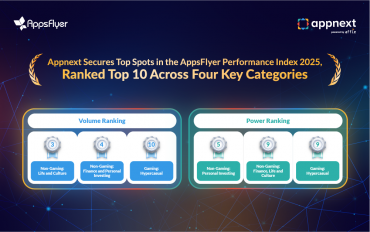The global mobile market was valued at approximately $140.5 billion in 2022 and is projected to reach $173.4 billion by 2026. Branding in today’s competitive environment demands more than just visibility—it requires engaging with highly active and device-native audiences. A recent study reveals that 46% of global users reported browsing the app stores, stressing the growing importance of targeted branding demand. Businesses are increasingly adopting segmented approaches to branding to cater to specific audience needs across different stages of the customer journey. This evolution has given rise to awareness, consideration, and conversion-focused strategies. While conventional digital advertising remains a staple, OEM (Original Equipment Manufacturer) inventory is reshaping how brands connect with users during high-impact moments, making it an essential component of modern marketing.
Understanding Branding Demand: The Three Core Categories
Branding demand can be classified into three core areas:
- Awareness Demand: Focuses on introducing a brand to new audiences, helping them recognize and remember it. For instance, a fitness app aiming to capture the attention of health enthusiasts may focus on high-visibility campaigns.
- Consideration Demand: Caters to users already familiar with the brand, providing more information and incentives to deepen their interest. A travel company showcasing vacation packages through native ads aligns perfectly with this phase.
- Conversion Demand: Targets users ready to act, whether that’s making a purchase or installing an app. A food delivery service offering real-time discounts through OEM notifications exemplifies how tailored messaging drives results.
Each stage demands a unique approach, and OEMs excel at delivering impactful solutions by combining visibility, context, and precision targeting.
How OEMs Fit into the Branding Demand Model
OEM inventory integrates seamlessly into every stage of the marketing funnel to address branding demand effectively. During the awareness stage, OEMs provide high-visibility placements, such as during device setup or in curated app folders, ensuring broad and impactful reach. Appnext’s embedded recommendation engine plays a crucial role here, integrating with OEM devices to suggest apps during moments like device setup or within curated folders. For the consideration stage, native ads integrated into pre-installed apps or OS-level features create a contextual relevance that nudges users toward deeper engagement. For instance, a gaming app ad placed in a dedicated “Games” folder ensures a seamless user journey aligned with the intent. Finally, during the conversion stage, OEMs leverage first-party data to enable personalized recommendations at critical decision-making moments. A fintech app targeting users who recently searched for budgeting tools can drive downloads with timely and relevant prompts. Studies indicate that pre-installed apps experience a 25% higher click-through rate and a 50% lower uninstall rate compared to apps downloaded from app stores. Additionally, 82% of users consider recommendations from OEMs as influential in their app selection process.
Vertical-Specific Considerations: How Different Industries Leverage OEM Inventory
Different industries across the board leverage OEM inventory to address unique branding challenges and opportunities— Retail brands use OEM placements for personalized product recommendations within shopping apps, driving awareness and consideration. Travel and tourism campaigns benefit from personalized travel deals displayed during relevant moments, such as map usage or travel searches, ensuring higher engagement. Gaming brands gain direct access to their audience through pre-loaded gaming apps, providing instant visibility and contextual ads for in-app purchases, fostering both awareness and user acquisition. Financial services also thrive in the secure OEM ecosystem, as OEMs offer secure, credible environments for promoting financial services like digital wallets or investment platforms.
The Benefits of Leveraging OEMs for Branding Demand
The benefits of leveraging OEM inventory extend beyond engagement. First-party data from OEM platforms enables precise audience targeting and personalized messaging based on user behavior. Device-native placements ensure high engagement as users interact with their devices throughout the day, while highly curated OEM environments guarantee brand safety, minimizing risks like ad fraud. For example, a luxury retail brand launching an awareness campaign via OEM folders can achieve high engagement rates in a premium, brand-safe context. Appnext takes these benefits further by offering AI-powered recommendations that elevate targeting, delivering contextual and personalized suggestions that resonate with users and lead to higher app engagement and downloads. Additionally, pre-installed apps and contextual discovery powered by AI ensure brands connect with users at their most receptive moments, whether during device setup or while using specific mobile features.
Appnext’s proprietary Timeline technology delivers hyper-personalized recommendations by learning user behavior to suggest apps aligned with their immediate needs. This personalization improves user satisfaction and engagement rates. For OEMs looking to expand beyond hardware sales, Appnext optimizes device real estate for app recommendations, creating a powerful monetization channel while delivering a high-quality user experience. Its cross-device integration extends beyond smartphones, allowing brands to leverage smart TVs, tablets, and connected devices for a seamless user journey across screens. By acting as a bridge between OEMs, app developers, and users, Appnext creates an interconnected ecosystem where advertisers gain quality exposure, OEMs monetize effectively, and users enjoy curated, relevant app recommendations.
Unlike social media or programmatic ads, OEM inventory delivers superior results in scenarios requiring direct, contextual engagement. Social media campaigns often struggle for visibility amidst saturated feeds, while programmatic ads face challenges such as ad fraud or low-quality impressions. By leveraging its device-native advantage, OEM inventory offers higher engagement and reliability.
Conclusion
In an era where precision and personalization drive success, OEM inventory stands out as a versatile, scalable, and high-impact solution for addressing diverse branding demands. Whether building awareness, nurturing consideration, or driving conversions, OEMs offer brands a direct pathway to success. Appnext, with its AI-powered platform and industry expertise, enables brands to navigate this ecosystem effectively, delivering unmatched results. Ready to transform your branding strategy with OEM inventory? Contact Appnext today and take the first step toward new growth opportunities.




Comments are closed.